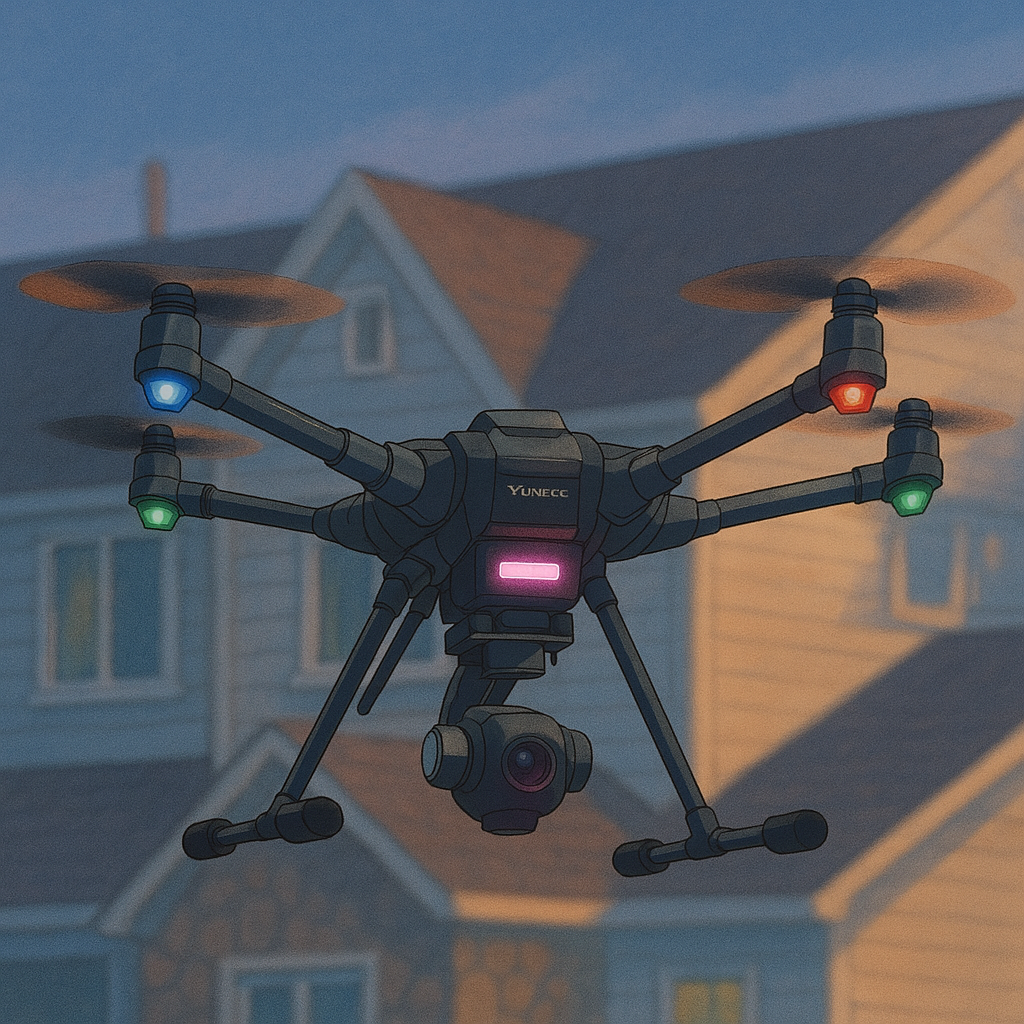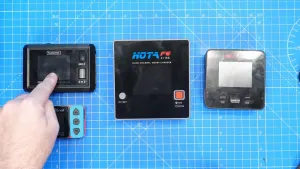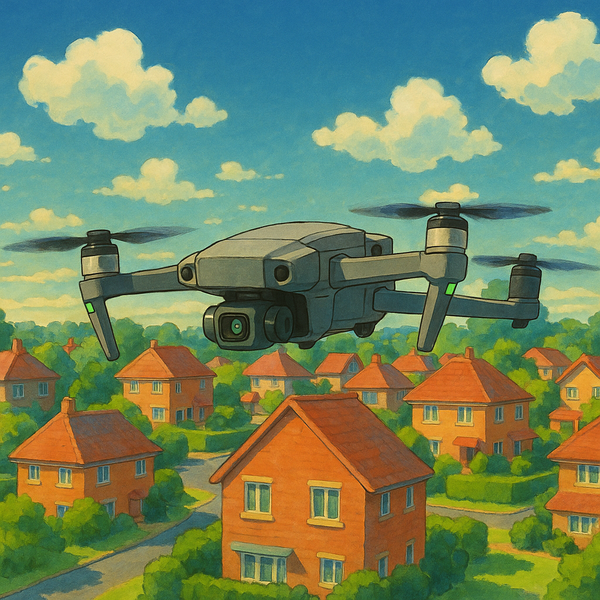Get ready for a significant shift in UK drone regulations! The Civil Aviation Authority (CAA) has officially confirmed that a drone class marking system will be implemented in the UK starting January 1, 2026. This new framework, rooted in retained EU law, is set to redefine how drones are categorized and operated, particularly within the widely used Open Category.
This category typically covers leisure drone flying and various low-risk commercial activities. While the final details are still awaited from the CAA, the introduction of class markings holds the promise of greater operational flexibility for many UK drone pilots compared to the current system.

This regulatory evolution coincides with the CAA taking on the role of the UK's Market Surveillance Authority (MSA) for drones. In this capacity, the CAA will be responsible for ensuring that drones placed on the market meet necessary safety and performance standards, holding manufacturers, importers, and distributors accountable. This move aims to enhance safety and security while supporting the continued growth of the drone sector.
Understanding Drone Class Markings
So, what exactly is a drone class marking (or class identification label)? Think of it as a certified label applied to a drone, confirming it meets specific, predefined standards covering aspects like:
- Safety Features: Design elements to minimize risk (e.g., propeller protection, no sharp edges).
- Performance Capabilities: Weight limits, maximum speeds, altitude restrictions.
- Technical Requirements: Systems like remote identification (Remote ID) and geo-awareness.
This marking directly informs pilots about the drone's capabilities and limitations, determining the operational subcategory (like A1, A2, or A3 within the Open Category) it can fly in and the corresponding rules (e.g., proximity to people).
Currently, the UK operates without such a system, relying on rules based on drone weight and whether the drone is 'legacy' or under transitional arrangements. The European Union Aviation Safety Agency (EASA), however, adopted a C0 to C6 marking system (with C0-C4 relevant to the Open Category) which became fully applicable in 2024. It's widely anticipated that the UK system will draw heavily from this EASA model.

The Open Category Explained
The Open Category is designed for lower-risk drone operations and is divided into three subcategories:
- A1: Fly over people. Drones in this category are typically very light. Flights are permitted over uninvolved people, but never over crowds or assemblies of people.
- A2: Fly close to people. This allows operations nearer to people than A3, but requires specific drone characteristics and often pilot competency qualifications (like the A2 CofC). Direct overflight of uninvolved people is generally not permitted.
- A3: Fly far from people. This subcategory is for operations in areas clear of uninvolved people and well away from residential, commercial, industrial, or recreational areas.
All Open Category flights must generally be conducted within Visual Line of Sight (VLOS) and below 120m (400ft) altitude.

The Current UK System (Pre-2026)
Until the class marking system takes effect, UK drone operations in the Open Category follow these rules, largely based on weight and transitional provisions set to expire:
| Subcategory | Drone Specification | Main Rules | Pilot Competency |
|---|---|---|---|
| A1 | < 250g (Legacy/Privately Built before 1 Jan 2026) | Fly over uninvolved people (not crowds); VLOS; <120m altitude. | Read User Manual |
| A1 Transitional | 250g - <500g (Placed on market before 1 Jan 2026) | No intentional flight over uninvolved people; VLOS; <120m altitude. | A2 CofC; Online Test |
| A2 Transitional | < 2kg (Placed on market before 1 Jan 2026) | Min 50m horizontal distance from uninvolved people; VLOS; <120m altitude. | A2 CofC; Online Test |
| A3 | < 25kg (Legacy/Privately Built before 1 Jan 2026 or without class marking) | No uninvolved people present; Min 50m distance from people; >150m distance from built-up areas; VLOS; <120m altitude. | Online Test |
Note: Transitional arrangements for A1 (250g-<500g) and A2 (<2kg) are expected to cease being valid with the introduction of the new system, pushing these non-class-marked drones potentially into the more restrictive A3 category.
What the Future May Hold: A Look at the EASA Model
The CAA has stated the UK system will be "based on retained EU law" and aligned internationally where it serves UK interests. If it closely follows the EASA model, here’s what we might expect for class-marked drones in the Open Category:
EASA Open Category Rules (C0-C4):
| C Class | Max Takeoff Mass | Subcategory | Key Operational Rules | Likely Pilot Comp. (EASA) |
|---|---|---|---|---|
| C0 | <250g | A1 | No flight over assemblies of people. Max 120m altitude. | Read Manual |
| C1 | <900g | A1 | Expect no flight over uninvolved people (minimize if unavoidable); No flight over assemblies. Max 120m altitude. | Online Test |
| C2 | <4kg | A2 | No overflight of uninvolved people; Min 30m horizontal distance (5m if low-speed mode active). Max 120m altitude. | A2 CofC; Online Test |
| C3 & C4 | <25kg | A3 | No overflight of uninvolved people; Min 150m horizontal distance from people & urban areas. Max 120m altitude. | Online Test |
Key Requirements Behind the Classes (Based on EU Reg 2019/945):
- C0: <250g MTOM, <19m/s speed, max 120m altitude limit (or user-settable), basic safety design, may need Remote ID depending on equipment. Very low risk.
- C1: <900g MTOM or <80J impact energy, <19m/s speed, max 120m altitude limit, Remote ID required, Geo-awareness system required, enhanced safety/control features, noise limits (non-fixed wing). Low risk.
- C2: <4kg MTOM, max 120m altitude limit, Remote ID required, Geo-awareness required, secure control link, low-speed mode (<3m/s) required (non-fixed wing), noise limits. Medium risk, enabling closer operations with pilot qualification.
- C3: <25kg MTOM, <3m dimension, max 120m altitude limit, Remote ID required, Geo-awareness required, secure control link. Similar weight to A3 legacy but with added tech requirements. Higher risk, kept far from people.
- C4: <25kg MTOM, no automatic flight modes (basic stabilization only), intended for model aircraft flyers. Simple, high-risk category kept far from people.
Examples of DJI Drones with EASA Class Markings:
- C0: DJI Mini series (Mini 4 Pro, Mini 3 etc.)
- C1: DJI Air series (Air 3, Air 2S), Avata 2, Mavic 3 Classic
- C2: DJI Mavic 3 Pro/Cine/Enterprise series, M30 series
- C3: DJI Inspire 3, Matrice 350 RTK

What criteria do manufacturers need to meet to obtain a drone class marking in the EU?
Each class rating has different criteria that drone manufacturers need to adhere to.
For the EU, this is based on EU Drone Regulation (Commission Delegated Regulation (EU) 2019/945), as amended by Commission Delegated Regulation (EU) 2020/1058.
Listed below is an overview of the key criteria for each drone marking, as taken from EU regulation. In this case, we'll only focus on C0-C4, as this relates to the Open Category.
| Class | Key Criteria |
|---|---|
| C0 | 1: Weigh under 250 g (including payload). 2: Fly no faster than 19 m/s. 3: Not exceed 120 m above take-off point. 4: Be safely controllable under all conditions, including system failures. 5: Be designed to minimise injury (no sharp edges; safe propeller design). 6: Be powered only by electricity. 7: If it has follow-me mode, stay within 50 m and allow pilot control. 8: Be sold with clear instructions covering UA class, weight, payload limits, control equipment, and behavior during signal loss; Operational guidelines and limits (e.g., weather, day/night use); Age-appropriate safety and risk info. 9: Include an EASA information notice with legal limits and duties. 10: Rules 4, 5, and 6 don’t apply if it’s considered a toy under EU toy safety law. |
| C1 | 1: Transmit less than 80 J of energy on impact or weigh under 900 g. 2: Fly no faster than 19 m/s. 3: Not exceed 120 m in height, or have a height limiter with clear info to the pilot. 4: Be safely controllable in all expected conditions, even if systems fail. 5: Be structurally strong and stable under normal use. 6: Be designed to minimize injury (e.g. no sharp edges, safe propeller design). 7: Handle data link loss reliably and safely. 8: Unless it is a fixed-wing, it must meet noise limits and display the sound power level. 9: Be electrically powered, with safe voltage levels. 10: Have a unique ANSI/CTA-2063-compliant serial number. 11: Include direct remote ID that: Uploads the operator registration number; Broadcasts flight data in real time (location, speed, height, pilot position, etc.); Prevents tampering with key data. 12: Include a geo-awareness system with: Updated airspace info; Warnings for airspace breaches or navigation issues. 13: If airspace limiting functions are present, they must work smoothly with flight controls and inform the pilot. 14: Warn the pilot of low battery in time to land safely. 15: Have lights for control and visibility, distinguishable from manned aircraft. 16: If follow-me mode is used, stay within 50 m and allow pilot control. 17: Be sold with a user manual covering: Specs, payload limits, remote control, ID protocol, sound level, and behavior during signal loss; Operation, maintenance, airspace loading, troubleshooting, and risk/safety info. 18: Include an EASA info notice on legal duties and limits. |
| C2 | 1: Weigh under 4 kg (including payload). 2: Be limited to 120 m altitude or have a height limiter with clear feedback to the pilot. 3: Be safely controllable under all conditions, even during system failures, by a competent pilot. 4: Be mechanically strong and stable during normal use. 5: For tethered UAS, meet strict tether strength and length requirements. 6: Be designed to minimize injury (e.g. no sharp edges, safe propeller design). 7: If untethered, handle command link loss safely and have secure control links. 8: If not fixed-wing, have a low-speed mode limiting speed to 3 m/s. 9: If not fixed-wing, meet sound level limits and display the sound rating. 10: Be powered only by electricity. 11: Have a unique ANSI/CTA-2063-A-2019-compliant serial number. 12: Include direct remote ID that: Uploads and verifies registration numbers; Broadcasts flight data in real-time (location, speed, ID, status); Prevents tampering. 13: Include geo-awareness features: Load and update restricted airspace data; Alert pilots of potential airspace breaches or system failures. 14: Integrate airspace-limiting functions smoothly with flight systems and inform the pilot. 15: Warn the pilot of low battery in time for safe landing. 16: Have control lights and at least one green flashing light for night visibility. 17: Come with a detailed user manual including: Specs, payload limits, control systems, remote ID setup, sound levels; Procedures for airspace updates, maintenance, troubleshooting, and limitations; Risk and safety information. 18: Include an EASA notice on legal duties and limitations. 19: If using network remote ID, it must transmit real-time flight data over a network using a secure, tamper-resistant system. |
| C3 | 1: Weigh under 25 kg (including payload) and be smaller than 3m. 2: Be limited to 120 m height or have a height limiter with clear info to the pilot. 3: Be safely controllable under all conditions by a competent remote pilot. 4: Tethered models must have a tether <50 m and meet strength requirements. 5: If untethered, handle link loss reliably and terminate safely if needed. 6: If not fixed-wing, display its certified noise level on the unit/packaging. 7: Be powered solely by electricity. 8: Have a unique serial number compliant with ANSI/CTA-2063-A-2019. 9: If untethered, include direct remote ID that: Uploads and verifies registration data; Broadcasts live flight and location data; Resists tampering. 10: Include a geo-awareness system that: Loads airspace restrictions; Alerts pilot to potential breaches or system faults. 11: Airspace-limiting functions must integrate safely and inform the pilot. 12: If untethered, have secure command/control links. 13: Warn pilot of low battery in time for a safe landing. 14: Have lights for control; At least one green flashing light for night visibility. 15: Be sold with a detailed user manual covering: Specs, payloads, control systems, ID protocols, sound levels, and emergency behavior; Setup, operations, airspace updates, maintenance, troubleshooting, and risks. 16: Include an EASA info notice on legal obligations. 17: If using network remote ID, it must: Transmit real-time flight data securely over a network; Resist tampering of ID functions. |
| C4 | 1: Weigh less than 25 kg (including payload). 2: Be safely controllable and manoeuvrable in all expected conditions, including system failures. 3: Not use automatic flight modes—only basic stabilisation and lost-link support (with fixed control positions). 4: Be sold with a user manual detailing: UA class, weight, payload limits, remote control setup, and behavior during signal loss; Clear instructions for operation, maintenance, troubleshooting, and limitations; Risk and safety information. 5: Include an EASA info notice on legal obligations. |
Potential Benefits for UK Pilots
The shift to a class marking system, especially one mirroring EASA's, could unlock significant operational advantages:
- More Freedom for Sub-900g Drones: A C1 drone (like a DJI Air 3, currently needing an A2 CofC and 50m distance in A2 transitional) could potentially operate in A1 under the new system. This might remove the A2 CofC requirement for these specific operations and allow flights much closer to uninvolved people (though not directly overhead intentionally).
- Closer Operations for C2 Drones: A C2 drone (like a Mavic 3 Pro, also currently needing an A2 CofC and 50m distance) could operate in A2, potentially allowing flights down to 30m (or even 5m in low-speed mode) from uninvolved people, provided the pilot holds the required A2 CofC.
- Clearer Rules: Standardised markings should make it easier for pilots, manufacturers, and enforcement agencies to understand instantly what a drone is capable of and where it can fly.
The CAA's 2023 consultation suggested a transition period until 2028 for operators in the Open Category to adopt class-marked drones, allowing time for the market and pilots to adjust.

Change is on the Horizon
The countdown to January 1, 2026, has begun. The introduction of drone class markings marks a pivotal moment for UK drone regulation, promising a more standardized, potentially more flexible, and safety-focused future.
While the potential benefits drawn from the EASA model are exciting, the definitive rules for the UK are still pending official publication by the CAA. Drone pilots and operators should stay informed and watch for further announcements from the CAA as the implementation date approaches. This change will shape the future of drone flying in the UK for years to come.







